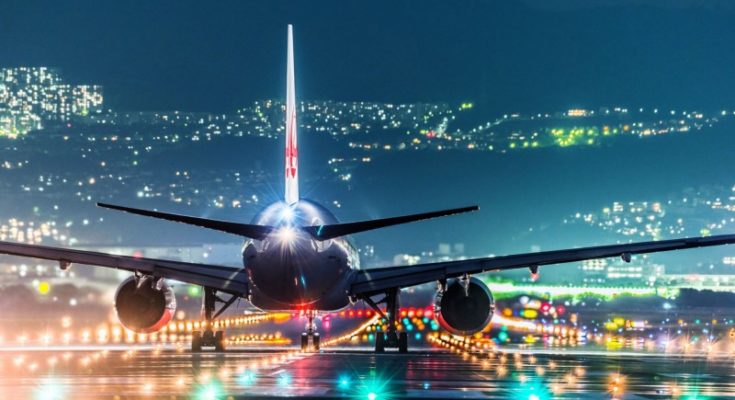In the aviation industry, the measures of collision avoidance are being heavily made use of. After all having a collision is bad for business, and for people. High-intensity lighting devices increase the visibility of the structure so that any aircraft can pass. Aviation Lights: 6 Types of Lights used by the Aviation Industry.
Basically these aviation lights are visible from a distance of miles and are of high intensity according to the electrician Northern Beaches.
In any and every kind of motor vehicle, emergency or warning lights are used. Be it breaks, indicators, siren or emergency – warning lights cannot be just mistreated. And when it comes to the airways, the entire aviation industry considers these warning lights quite seriously.
While flying, other planes or tall buildings and structures can distract the pilot. The probability of this disturbance increases during the night. And here enters the aviation industry to play its part.
What are Aviation Lights?
In simple words, warning or aviation lights are high illuminations that help in directing the plane towards the correct path, be it in the air or on the runway. Usually, these are installed on tall structures (200 ft. or above) to prevent the collision of the plane with other aircraft or buildings.
These lights also help the aircraft controllers locate the position of the aircraft from the ground. Around Australia, they are usually installed with the help of the Northern Beaches electrical contractors Sydney.
1. Xenon Discharge Flasher
‘Xenon Discharge Flasher’ was the first type of aviation light. It was an impressive white strobe light that was slowly outdated due to the growing use of “Red Lamps”. These red lamps are now mostly used by nearly all countries. The powerful LED lights are low on maintenance but highly reliable and are used for illumination. The red LED lamps have a long lifespan as compared to Xenon Discharge Flashers and have a much longer warranty period.
2. Low Intensity LED lights
They are usually maintenance-free and quite in demand in smaller cities. When it comes to low intensity LED lights, they are mainly installed by the electricians of Northern Beaches Sydney in the Australian continent. These low intensity LED lights are typically used during the day.
They are significantly more energy efficient, consuming around 10% less power than the contemporary incandescent bulbs. These solar powered LED lights are considered to be eco-friendly and much cheaper in cost despite being of superior quality.
3. Medium Intensity LED lights
The other sophisticated type of lights that are found installed at high rise buildings are the medium intensity aviation lights. These lights assist in electricity and power saving as their life span is of at least 100,000 hours. These LED medium intensity lights are quite advanced and are generally equipped with an inbuilt visual alarm.
4. Twin aviation warning lights
The twin aviation lights are the most advanced warning lights available and are considered to be the best. These are very eco-friendly and energy-efficient as well as safe and reliable. They are often installed over high rise buildings, TV towers, transmission line towers, or windmills. Being equipped with solar technology these lights are usually maintenance-free.
5. Red and White lights
The red ones are used during night hours as they are not affected by other rays in the surrounding areas. Almost all the urban area airports and runways prefer red LED lights. Contrary to this, white is used in the day time. White aviation lights are also manufactured in two types. The medium density lights are installed at a height of about 200 to 500 feet, while high-intensity white aviation lights are installed above this.
6. Laser Diodes (LD)
The laser is well-known to be very monochromatic and it bears resemblance to the concept of electronic oscillator. This laser is capable to provide optical amplification and optical resonator that provides optical feedback.
The p-n junction forms this laser diode that gets the power through the electric current. Its formation lies in doping a very thin layer over the surface of the crystalized water and this produces n-p type of region forming the junction.
These diode lasers make use of the microscopic ships as well as other semiconductors for generating coherent light in smaller forms. The mechanism for the laser action is provided through the differences of the energy levels between the conduction as well as the valence of the band electrons that are provided through the mechanism for the laser action that is there.
The most efficient of every light emitter are the diode lasers of higher powers. To give its user the ability to have a precise control over the laser diode electricity as well as the temperature that is there. They operate through the selection of the current in the laser drive that is well modulated with the use of the modulation aspect over most of the drivers. The temperature of the laser is fixed usually through the precise stabilization of the wavelength.
The device in solid state is not much different from that of the general LEDs.
These are just 6 of the Different Types of Aviation Lights used in the Aviation Industry, primarily to avoid collisions and to track flights and distances.
Also Checkout:
9 Sparkling Lighting Ideas for Christmas Decoration 2019
Exhibition Stand Design: Why your Exhibition Stand is not making an Impact




